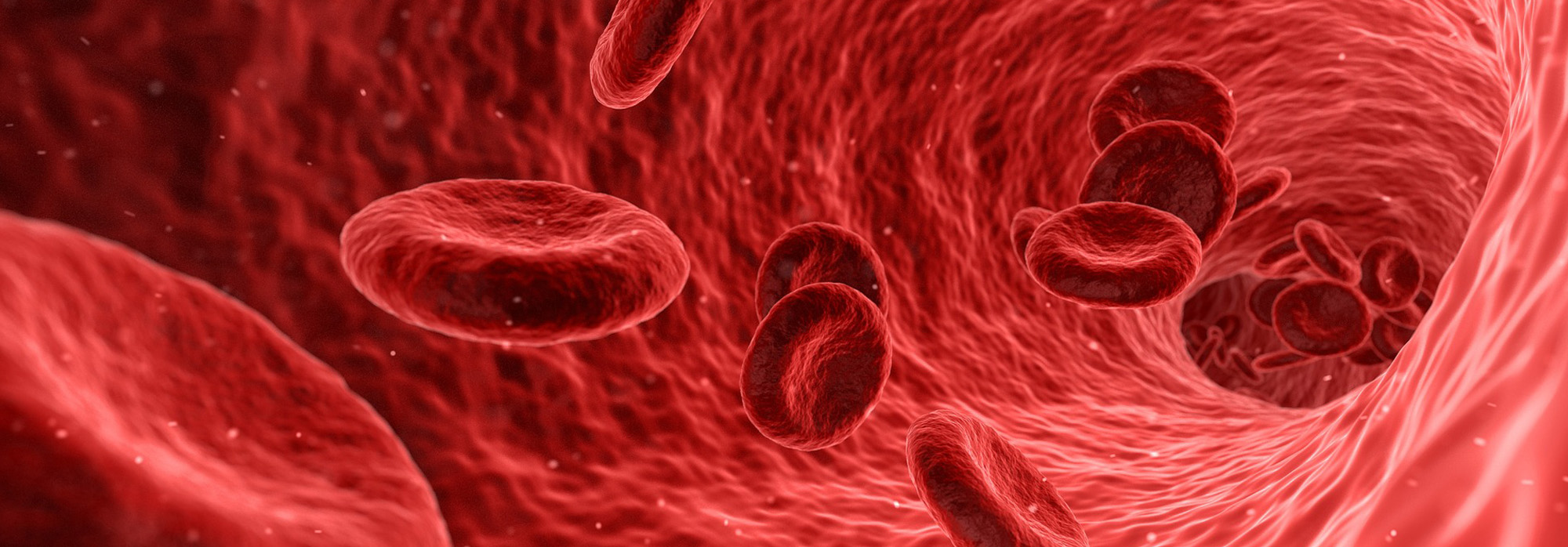Phone: (602) 840-0681 | Fax: (602) 957-1570

Platelet Rich Plasma Therapy
Desert Spine and Sports Physicians is the leading provider of non-surgical musculoskeletal therapies including the popular and proven regenerative therapy, Platelet Rich Plasma (PRP). We have been delivering PRP injections for over a decade, and it is our preferred regenerative treatment option for musculoskeletal injury because it is safe and effective. This therapy utilizes a concentrated form of platelets from a patient’s own blood, which have growth factors that accelerate the body’s natural healing process, leading to tissue repair and regeneration. PRP reduces pain and improves function in various musculoskeletal conditions, including joint, tendon, and ligament injuries.
How PRP Works
1. Joint Pain
PRP therapy can be used to alleviate joint pain, especially in conditions like osteoarthritis. Osteoarthritis is characterized by the breakdown of joint cartilage, leading to pain and reduced joint function. When PRP is injected into a joint, it is believed to:
- Promote Healing: The growth factors in PRP can stimulate the production of new cartilage cells, which aids in repairing damaged cartilage and promoting tissue regeneration within the joint.
- Reduce Inflammation: PRP’s anti-inflammatory properties can help to decrease the inflammation in the joint, which is often associated with pain and reduced mobility in conditions like arthritis.
- Enhance Lubrication: PRP injections may improve the synovial fluid’s viscosity and lubricating properties within the joint, which alleviates pain, reduces friction, and enhances joint mobility.
2. Tendon and Ligament Pain
PRP therapy is also commonly used to treat tendon-related injuries, such as tendonitis or tendinosis/tendinopathy, and ligament injuries, such as sprains or strains. PRP therapy for tendon and ligament pain works by:
- Enhancing Healing: The growth factors in PRP enhance collagen production, which heals injuries and promotes the growth of new, healthier tissue in damaged tendons and ligaments. This is particularly useful in chronic issues where healing is slow.
- Reducing Pain: Just as in joint pain, the anti-inflammatory properties of PRP can reduce pain by reducing swelling and irritation in and around the affected tendon or ligament.
- Strengthening Tissue: PRP stimulates the production of collagen, a key protein for tendon and ligament strength and function. Increased collagen production leads to improved tissue strength and stability and, therefore, reduced risk of re-injury.
How PRP is Made
1. Blood Collection
To create PRP, a small sample of the patient’s blood is taken, usually from a vein in the arm. The blood is then processed to separate its components.
2. Centrifugation
The collected blood is placed in a centrifuge, a machine that spins rapidly to separate different components of the blood based on their densities in a two-step process. This process separates the platelets with their growth factors from the other blood components, such as red blood cells and neutrophils.
3. Platelet-Rich Plasma
After centrifugation, the concentrated platelets, approximately 8x the amount of platelets as compared to whole blood, are separated from the rest of the blood. This concentrated solution is the Platelet-Rich Plasma.
4. Application
The PRP can then be injected into the site of injury or treatment. It is vital that PRP is injected with image guidance to ensure the therapy is delivered to the proper site.
It is important to note that while PRP therapy holds promise, its effectiveness can vary depending on factors such as the specific condition being treated, the severity of the condition, and the patient’s overall health. PRP therapy is generally considered safe because it utilizes the patient’s own blood components, reducing the risk of allergic or immune reactions. However, like any medical procedure, there can be potential risks and side effects, such as infection, pain at the injection site, or no significant improvement in symptoms.
If you are considering PRP therapy for your pain, it is essential to consult an expert in the field of musculoskeletal medicine who can assess your condition and determine whether PRP is a suitable option for you. Here at Desert Spine and Sports Physicians, our Physicians are fellowship-trained in Advanced Interventional Procedures, and together, we have garnered 38 “Top Doc” Phoenix Magazine awards. We have safely performed over 300,000 musculoskeletal injections and deliver all of our procedures accurately under image guidance such as ultrasound or fluoroscopy. If you are interested in knowing more about PRP therapy, we will schedule you for an initial visit billed to the insurance carrier (if contracted) to evaluate your issue and discuss how to prepare for the PRP injection. The PRP therapy, which is not covered by insurance and costs $900, will then be injected at the follow-up appointment.
At Desert Spine and Sports Physicians, we are constantly evaluating the best treatment options for our patients, and we are happy to discuss what really works when it comes to regenerative musculoskeletal medicine. We look forward to helping you manage your pain and injury and return you back to function. To book with us, please contact us at info@desertspineandsports.com, or call us at 602-840-0681.
Patient Testimonials
-
Tennis Elbow Relief with PRP Injections: Joe's Story

-
From Back Pain to Back to an Active Life: How PRP Injections Changed Helena's Life

-
Jennifer's Story of Knee Pain Relief with PRP Injections at Desert Spine and Sports Physicians

-
PRP Patient:
Craig G's PRP Injection Journey

-
PRP Patient:
Carol's Journey with PRP Therapy

PRP References
ACHILLES
– TENFORDE, A., ROBINSON, D., BORG-STEIN, J., BORGSTROM, H. AND SINGH, J.R. (2020), EXTRACORPOREAL SHOCKWAVE THERAPY VERSUS PLATELET-RICH PLASMA FOR ACHILLES TENDINOPATHY. PM&R: THE JOURNAL OF INJURY, FUNCTION AND REHABILITATION, 12: 1169-1176. HTTPS://DOI.ORG/10.1002/PMRJ.12498
CMC
– HASLEY IB, BIES MM, HOLLMAN JH, CARTA KG, SELLON JL, BRAULT JS. PLATELET-RICH PLASMA INJECTION FOR THUMB CARPOMETACARPAL JOINT OSTEOARTHRITIS. ARCH REHABIL RES CLIN TRANSL. 2023;5(1):100257. PUBLISHED 2023 JAN 29. DOI:10.1016/J.ARRCT.2023.100257
ELBOW
– TANG S, WANG X, WU P, ET AL. PLATELET-RICH PLASMA VS AUTOLOGOUS BLOOD VS CORTICOSTEROID INJECTIONS IN THE TREATMENT OF LATERAL EPICONDYLITIS: A SYSTEMATIC REVIEW, PAIRWISE AND NETWORK META-ANALYSIS OF RANDOMIZED CONTROLLED TRIALS. PM R. 2020;12(4):397-409. DOI:10.1002/PMRJ.12287
GTPS
– FITZPATRICK J, BULSARA MK, O’DONNELL J, ZHENG MH. LEUCOCYTE-RICH PLATELET-RICH PLASMA TREATMENT OF GLUTEUS MEDIUS AND MINIMUS TENDINOPATHY: A DOUBLE-BLIND RANDOMIZED CONTROLLED TRIAL WITH 2-YEAR FOLLOW-UP. AM J SPORTS MED. 2019;47(5):1130-1137. DOI:10.1177/0363546519826969
HIP
– DALLARI D, STAGNI C, RANI N, ET AL. ULTRASOUND-GUIDED INJECTION OF PLATELET-RICH PLASMA AND HYALURONIC ACID, SEPARATELY AND IN COMBINATION, FOR HIP OSTEOARTHRITIS: A RANDOMIZED CONTROLLED STUDY. AM J SPORTS MED. 2016;44(3):664-671. DOI:10.1177/0363546515620383
– LIM A, ZHU JB, KHANDUJA V. THE USE OF INTRA-ARTICULAR PLATELET-RICH PLASMA AS A THERAPEUTIC INTERVENTION FOR HIP OSTEOARTHRITIS: A SYSTEMATIC REVIEW AND META-ANALYSIS [PUBLISHED ONLINE AHEAD OF PRINT, 2022 JUN 7]. AM J SPORTS MED. 2022;51(9):3635465221095563. DOI:10.1177/03635465221095563
– KRAEUTLER MJ, HOUCK DA, GARABEKYAN T, MILLER SL, DRAGOO JL, MEI-DAN O. COMPARING INTRA-ARTICULAR INJECTIONS OF LEUKOCYTE-POOR PLATELET-RICH PLASMA VERSUS LOW-MOLECULAR WEIGHT HYALURONIC ACID FOR THE TREATMENT OF SYMPTOMATIC OSTEOARTHRITIS OF THE HIP: A DOUBLE-BLIND, RANDOMIZED PILOT STUDY. ORTHOP J SPORTS MED. 2021;9(1):2325967120969210. PUBLISHED 2021 JAN 20. DOI:10.1177/2325967120969210
KNEE
– OEDING JF, VARADY NH, FEARINGTON FW ET AL. PLATELET-RICH PLASMA VERSUS ALTERNATIVE INJECTIONS FOR OSTEOARTHRITIS OF THE KNEE: A SYSTEMATIC REVIEW AND STATISTICAL FRAGILITY INDEX-BASED META-ANALYSIS OF RANDOMIZED CONTROLLED TRIALS AM J SPORTS MED. 2024 FEB 29:3635465231224463. DOI: 10.1177/03635465231224463.
– SUBRAMANYAM K, ALGUVELLY R, MUNDARGI A, KHANCHANDANI P. SINGLE VERSUS MULTI-DOSE INTRA-ARTICULAR INJECTION OF PLATELET RICH PLASMA IN EARLY STAGES OF OSTEOARTHRITIS OF THE KNEE: A SINGLE-BLIND, RANDOMIZED, SUPERIORITY TRIAL. ARCH RHEUMATOL. 2021;36(3):326-334. PUBLISHED 2021 JAN 14. DOI:10.46497/ARCHRHEUMATOL.2021.8408
– FILARDO G, PREVITALI D, NAPOLI F, CANDRIAN C, ZAFFAGNINI S, GRASSI A. PRP INJECTIONS FOR THE TREATMENT OF KNEE OSTEOARTHRITIS: A META-ANALYSIS OF RANDOMIZED CONTROLLED TRIALS. CARTILAGE. 2021;13(1_SUPPL):364S-375S. DOI:10.1177/1947603520931170
– MIGLIORINI F, DRIESSEN A, QUACK V, ET AL. COMPARISON BETWEEN INTRA-ARTICULAR INFILTRATIONS OF PLACEBO, STEROIDS, HYALURONIC AND PRP FOR KNEE OSTEOARTHRITIS: A BAYESIAN NETWORK META-ANALYSIS. ARCH ORTHOP TRAUMA SURG. 2021;141(9):1473-1490. DOI:10.1007/S00402-020-03551-Y
– HAN Y, HUANG H, PAN J, ET AL. META-ANALYSIS COMPARING PLATELET-RICH PLASMA VS HYALURONIC ACID INJECTION IN PATIENTS WITH KNEE OSTEOARTHRITIS. PAIN MED. 2019;20(7):1418-1429. DOI:10.1093/PM/PNZ011
– KON E, BUDA R, FILARDO G, ET AL. PLATELET-RICH PLASMA: INTRA-ARTICULAR KNEE INJECTIONS PRODUCED FAVORABLE RESULTS ON DEGENERATIVE CARTILAGE LESIONS. KNEE SURG SPORTS TRAUMATOL ARTHROSC. 2010;18(4):472-479. DOI:10.1007/S00167-009-0940-8
– BELK JW, KRAEUTLER MJ, HOUCK DA, GOODRICH JA, DRAGOO JL, MCCARTY EC. PLATELET-RICH PLASMA VERSUS HYALURONIC ACID FOR KNEE OSTEOARTHRITIS: A SYSTEMATIC REVIEW AND META-ANALYSIS OF RANDOMIZED CONTROLLED TRIALS. AM J SPORTS MED. 2021;49(1):249-260. DOI:10.1177/0363546520909397
PLANTAR FASCIA
– KALIA RB, SINGH V, CHOWDHURY N, JAIN A, SINGH SK, DAS L. ROLE OF PLATELET RICH PLASMA IN CHRONIC PLANTAR FASCIITIS: A PROSPECTIVE STUDY. INDIAN J ORTHOP. 2020;55(SUPPL 1):142-148. PUBLISHED 2020 OCT 6. DOI:10.1007/S43465-020-00261-W
SHOULDER
– NEJATI P, GHAHREMANINIA A, NADERI F, GHARIBZADEH S, MAZAHERINEZHAD A. TREATMENT OF SUBACROMIAL IMPINGEMENT SYNDROME: PLATELET-RICH PLASMA OR EXERCISE THERAPY? A RANDOMIZED CONTROLLED TRIAL. ORTHOP J SPORTS MED. 2017;5(5):2325967117702366. PUBLISHED 2017 MAY 19. DOI:10.1177/2325967117702366
– PRODROMOS CC, FINKLE S, PRODROMOS A, CHEN JL, SCHWARTZ A, WATHEN L. TREATMENT OF ROTATOR CUFF TEARS WITH PLATELET RICH PLASMA: A PROSPECTIVE STUDY WITH 2 YEAR FOLLOW-UP. BMC MUSCULOSKELET DISORD. 2021;22(1):499. PUBLISHED 2021 MAY 29. DOI:10.1186/S12891-021-04288-4
SI JOINT
– LING JF, WININGER AE, HIRASE T. PLATELET-RICH PLASMA VERSUS CORTICOSTEROID INJECTION FOR LUMBAR SPONDYLOSIS AND SACROILIAC ARTHROPATHY: A SYSTEMATIC REVIEW OF COMPARATIVE STUDIES. CUREUS. 2021;13(3):E14062. PUBLISHED 2021 MAR 23. DOI:10.7759/CUREUS.14062
Patient Testimonial
"Most efficient, friendly, competent staff and doctors. Dr. Sorosky is terrific. Today, I had two epidural injections to calm down a herniated disc in my next. Dr. Brad took the time to explain the procedure and walked me through each step. I highly recommend him."
Mark D
"Dr Minkley LISTENED to what I had to say. He is attentive, caring, and knowledgeable. What he told me about my back pain made sense. I’d recommend him to anyone."
"I have seen Doctor Vu for my shoulder. I can't say enough about his thoroughness and ease of communication. I always feel I understand what we are doing and why. He always lays out the options available and what they may entail. Great job."
"Dr. Vu has been so helpful, skilled, and knowledgeable. I've had my spine and shoulders injected before having hip surgery, and there's a huge difference in my pain level. I'm very thankful."
"Dr. Vu was very attentive and listened to my explanation. He was able to give me a treatment to relieve my pain and a prescription. He explained everything very clearly, and answered all my questions. I think he is very thorough and understanding. I felt very reassured about my situation and condition. Plus, he had a great manner and was a doctor that I can trust. I would definitely recommend him highly."
"Dr. Brad Sorosky is a gift. He is attentive, listens, and found the right procedure for me for my lower back pain. His office is run professionally. Everything is timely. His staff is courteous and always keeps customer service as a plus. I highly recommend him."
Sally R
"Dr. Susan Sorosky is so great! I’m someone who tends to have a lot of questions because I like to understand my diagnosis. She is probably one of the few doctors that sits with me, addresses my concerns, and makes me feel heard. I would recommend her to anyone!"
Emerson K
"Susana Leyva was amazing and answered every question I had and informed me of possible issues I wasn’t even aware of. Extremely professional and knowledgeable and I would recommend all day, every day. Amazing person. Also set me up for return visit after a MRI to discuss our next step to stop the pain and fix the pinched nerve she diagnosed me with. Amazing person."
Judith W
"Josh Reedy gives his patients good attention and expertise as he listens, communicates understanding, and offers the best options. He doesn’t over-treat or suggest solutions not in the best interests of the patient, either. He is encouraging even in not-so-good situations."
Jaqueline H
"I could not be happier with Dr. Le. She is detailed and patient without forcing processes of procedures until you are ready. The staff is very friendly and caring."
Sutton P
"After seeing multiple spinal docs in last 8 years I can say that not only does Dr. Sorosky have a compassionate demeanor, he gets to the root of the problem and immediately looks for a quick solution, starting with non-invasive. He is a professional and caring spinal doc. Glad I was referred to him to treat my low back issues!!"
Jamie C
"Dr. Sorosky was on time, knowledgeable and thorough in her evaluation, examination and discussion of recommendations. She listened to me and had my best interests in mind when making recommendations. Would definitely go back and would/will recommend her to others. Very happy with my care."
Suzie E.
"Wonderful. Dr. Ralhan is amazing. He asks the right questions, and listens an has the solution. He is extraordinary at pain management like no other. I work in an Industry where your body can get beat up and it was nice to finally find a Dr who knew exactly what kind of medicine to give without feeling loopy or out of the sort."
Leilani P
"Susana was very knowledgeable and didn't seem rushed. Very easy to talk to. Also, explained more about my x-rays that I did not know. I really feel confident about what she explains. I really like her."
B Kitchin
"Dr. Ralhan is the first pain management doctor who shared all the information and made sure I understood it all. No rush, completely interested in hearing what I said. Staff was absolutely great ... friendly, efficient, caring. I really could go on and on. Absolutely recommend"
Lita J
"Dr. Minkley answered my questions, educated me on the anatomy, cause, and treatment options for my injury, and made time for a same-day treatment because of my busy schedule. I received excellent care and would recommend him to everyone."
Lyndey H
"Dr. Minkley was great. He was friendly and very gentle with me and explained everything in a way I could understand. He also got me in quickly, which I very much appreciated since I was experiencing discomfort. I would absolutely go back to him."
Nancy P
"Dr. Le was wonderful. She explained the situation, plan of attack, and answered all of my questions and concerns. She is a credit to her profession, the clinic she represents, and the patients she serves."
Charlie J
"I would recommend Desert Spine-Phoenix and Dr. Brent Page to anyone. Very professional and compassionate along with explaining step by step everything they were doing through the procedure."
D.E Jones
"First time in this office, seen by Josh Reedy, I was impressed with him, he listened, answered my questions, he helped me with my issues, great doctor. I will be referring him to all my family and friends."
Blanqui B
"Joshua Reedy gives his patients good attention and expertise as he listens, communicates understanding and offers the best options. He doesn’t overtreat or suggest solutions not in the best interests of the patient, either. He is encouraging even in not-so-good situations."
Jaqueline H
"Dr. Hatch was great! Saw him today and he was clear in his communication, took his time to listen to me, and I liked that his treatment plan is conservative and not the type where you feel like the doc is just trying to recommend the most expensive plan. He felt honest in his diagnosis and treatment planning. And he was friendly and not rushed. I recommend him and his office. The front office gal was also really friendly."
Jennifer B
"Most efficient, friendly, competent staff and doctors. Dr. Sorosky is terrific. Today, I had two epidural injections to calm down a herniated disc in my next. Dr. Brad took the time to explain the procedure and walked me through each step. I highly recommend him."
Mark D
"Susana Leyva is great! She takes the time to listen to what is wrong and finds the best way to treat the problem. She's very caring and compassionate. All of the office staff is kind and helpful. I highly recommend them."
Jeanne A
"Susana Leyva was amazing and answered every question I had and informed me of possible issues I wasn’t even aware of. Extremely professional and knowledgeable and I would recommend all day, every day. Amazing person. Also set me up for return visit after a MRI to discuss our next step to stop the pain and fix the pinched nerve she diagnosed me with. Amazing person."
Judith W
"I had gone to several Doctors before I was referred to Dr. Hatch. Dr. Hatch is incredible. He took the time to explain in detail my diagnosis and options. He has been very transparent and honest with me. He is very personable. I would recommend him wholeheartedly. I would not go anywhere else to be treated for my current issue."
Candace H
"Dr. Page cares about my well-being. He does not try to encourage unnecessary procedures. He gives good advice while being attentive to my concerns."
Marie R
"Dr. Tima Le was absolutely terrific! I came in with a very painful spinal injury. She was very gentle as she checked my physical condition, and was very understanding as she listened to my emotional expression of my uncomfortable state at the time."
Gail W
"Dr. Tima Le is one of the very best Doctors I have ever seen. And I have had MORE doctors than I can even count or remember. She is SO caring and explains everything so a common person can understand. She has made me feel like she is not going to give up on me until we find pain relief. I will be referring all my friends and family."
Becky
"Dr. Brent Page was incredible! He took his time during my visit. I have been in tremendous pain, and Dr. Brent was so caring listening to my story. He was very detailed in his explanation of the procedure he was going to perform (and was able to fit me in the very next day ) to hopefully help with my pain. One of the most amazing doctors I have been to, and I have been to more than I can count."
Abigail R
